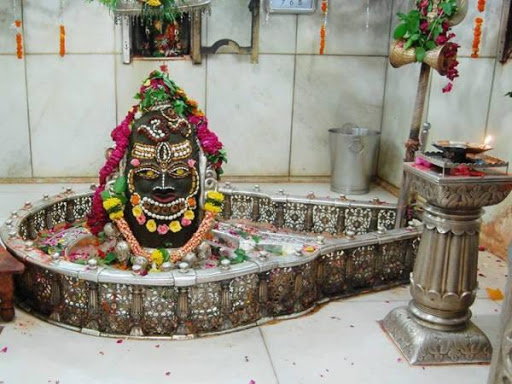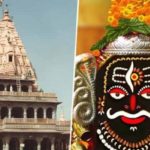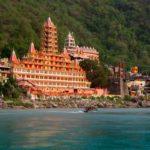Top 10 Tourist Places To Visit Ujjain is one of those divine lands where you not only experience peace, but also fall into the divinity that calms your soul from within.
A big attraction here is the Jyotirlinga Mahakaleshwar. It is one of the 12 jyotirlingams, where the daily practice that you must attend is Bhasma Aarti. Make sure to follow the dress code to attend the aarti, if you want to go inside the sanctum and participate in Abhishek.
Harsiddhi temple, Kal Bhairav temple, Shri Chintaman Ganesh are other attractions, to name a few. A special practice can be observed at Kal Bhairav temple. Kal Bhairav is dedicated to the temple and the devotees give liquor as Prashad to the deity.
Mahakaleshwar Temple: The Main Temple
Among the twelve celebrated Jyotirlingas in India, Shri Mahakaleshwar of Ujjayini is recognized. In multiple Purans, the glory of Mahakaleshwar temple has been vividly mentioned. Many Sanskrit poets have praised this temple in emotive terms, beginning with Kalidasa. Ujjain used to be the focal point of Indian time measurement, and Mahakala was known as Ujjain’s distinctive presiding deity. The presiding god of time, Shiva, reigns eternally in Ujjain in all his splendor. With its beauty, the temple of Mahakaleshwar, its shikhara soaring into the heavens, an imposing façade against the skyline, evokes primordial awe and reverence. The Mahakal, even in the midst of the busy routine of contemporary concerns, dominates the life of the city and its people and provides an unbreakable link with past traditions.
The lingam at the Mahakal is believed to be swayambhu (born of itself), one of the 12 Jyotirlingas in India, deriving power currents (Shakti) from within itself as against the other images and lingams that are ritually formed and invested with mantra-shakti. It is recognized that the idol of Mahakaleshwar is dakshinamurti, facing the South. This is a unique aspect, preserved by the tantric tradition that is present among the 12 jyotirlingas only in Mahakaleshwar. In the sanctum above the Mahakal temple, the idol of Omkareshwar Shiva is consecrated. In the western, northern and east of the sanctum sanctorum, the images of Ganesh, Parvati and Karttikeya are installed. The picture of Nandi lies to the south. The Nagchandreshwar idol on the third floor is only open for darshan on the day of Nagpanchami. A major fair is conducted near the temple on the day of Mahashivaratri, and worship continues through the night.
Kal Bhairav Temple: A Tantrik Cult
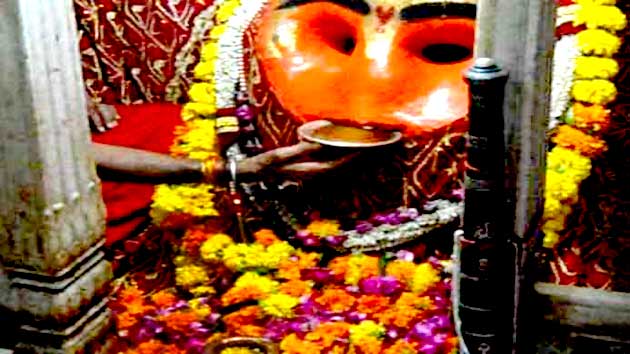
Ujjain Temple Kal Bhairav is a must-visit temple known for its special tradition of offering liquor to God. The history of this Ujjain temple is very interesting and the Pagdi (Crown) that the Lord wears is King of Shinde or Gwalior’s Schindia.
Kal Bhairav Temple is said to have been founded on the banks of the Shipra River by King Bhadrasen. This ancient temple is dedicated to the Chief of the Eight Bhairavs, Kal Bhairav. The worship of Kal Bhairav, primarily in the Kapalika and Aghora sects, is part of the Shaivite tradition. The Kal Bhairav Temple’s striking feature is its exquisite Malwa-style paintings, of which only traces are visible.
The manifestation of Lord Shiva, which is said to oversee the time ahead, is Lord Kal Bhairav. It is often said that “Time lost is lost forever” so that time in life should be made good use of. The Temple of Kal Bhairav is the location where Lord Kal Bhairav is revered. To the devotees of the Shaivaites, this is a must see.
Ved Shala, Ujjain: Time For Ancient Texts

In the holy metropolis of New Ujjain, Vedh Shala is situated. Is it an observatory constructed with Maharaja Jai’s help? In 1725, consisting of thirteen architectural astronomy gadgets, Singh II. The observatory is one of the five observatories built with the help of Maharaja Jai. Singh II when he was Ujjain’s governor. In order to measure nearby time, surrounding altitude and also to measure the declination of the Sun, stars and planets and to determine eclipses, Vedh Shala was constructed.
In addition, the use of various special instruments was documented for the movement, speed and properties of stars and planets. Jai Singh II was also an astronomer and had a strong interest in astronomy and scientific know-how. He sent his scholars to several countries in the early 18th century to look at the layout, development and age of the observatories, and also the prevailing era. With their observations and plenty of manuals on astronomy, the scholars returned. In Jaipur, Mathura, New Delhi and Ujjain, and in Varanasi, Jai Singh II subsequently built five observatories between 1724 and 1737.
Chintaman Ganesh Temple: The Self-Born Idol
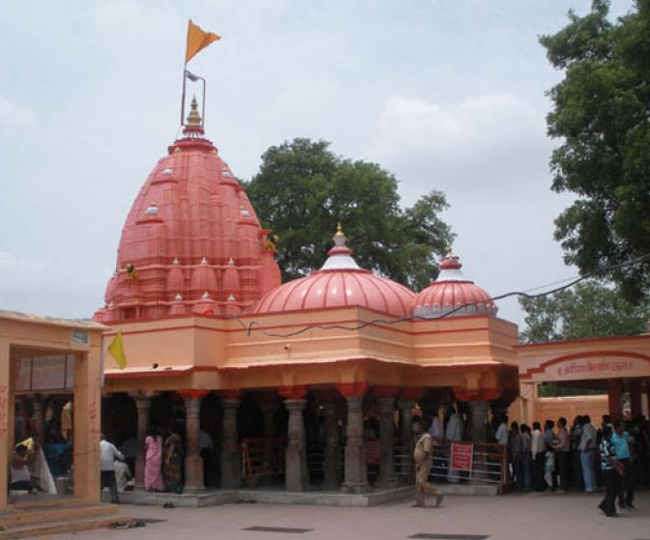
Chintaman Ganesh Temple, situated near the Shipra River on the Fatehabad railway line, is one of the oldest temples in Ujjain, housing a massive idol of Lord Ganesh, one of India’s most revered gods. The greatest idol here is believed to have been born by itself; thus it is of tremendous religious significance. Devotees throng to this temple because the deity here is generally referred to as Chintaharan Ganesh, which means ‘the promise of liberation from worldly anxieties.’
Ram Ghat: Religious Dips

Among the most popular places to see in Ujjain, Ram Ghat is situated adjacent to the Harsiddhi Temple. It is believed that this is the place where, when he was here with his consort Sita and brother Laxman, Lord Ram used to take a bath, and as such, this ghat is one of the most frequented religious sites in Ujjain. The Ghat is one of the four venues that host the friendly Kumbh Mela that takes place every 12 years. Devotees take a dip in the water here on a regular day and perform their everyday rituals, which are thought to wash away all your misery and help achieve salvation. Apart from its religious significance, the ghat is also a good place for a leisurely walk especially in the early morning and at dusk.
Gopal Mandir: The Popular Krishna Temple
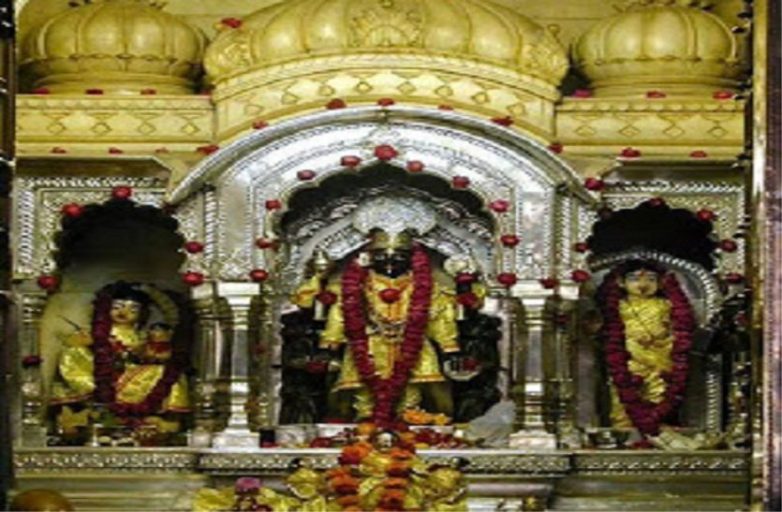
In the center of the wide market square is Gopal Mandir, Ujjain. The temple is dedicated to Krishna, the blue deity. The divine herdsman and lover of the milkmaids is Krishna. It is not very difficult to reach the temple, as Ujjain is well connected by bus to Indore, Bhopal, Manali and Kota, and well connected by train to Delhi, Bhopal, Jhansi, Agra, Indore, Jabalpur and Bilaspur. Kaal Bhairav, Mahakal Temple, Triveni (Nav Graha/ Shani), ISKCON Temple, Mangalnaath, Harsidhi (Durga Temple), Chintaman Ganesh, Gadh Kalika and Sandipani Ashram are the other must-visit places in the city, apart from the Gopal Mandir.
Gopal Mandir, Ujjain is a marble-spired building that is an outstanding example of architecture in Maratha. In India, the Gopal Mandir in Ujjain has a two-foot-high statue of Lord Krishna. Moulded in silver, the statue is set with silver-plated doors on a marble-inlaid altar. These doors were taken by Mahmud of Ghazni from the famous Somnath Temple in Gujarat and brought to Ghazni in Afghanistan in 1026 A.D. Mahmud Shah Abdali, the Afghan invader, later took the gates to Lahore and Mahadji Scindia eventually recovered them from there. The Scindia ruler installed them in Gopal Temple after recovering the gates, putting a stop to the long voyage of the doors.
A marble-towered structure and a typical example of Maratha architecture is The Gopal Mandir, Ujjain. Inside the sanctuary of Madhya Pradesh’s Gopal Mandir, there is a two-foot-high statue of Lord Krishna draped in silver on a marble-inlaid altar flanked by silver-plated portals. The door in the inner sanctum is the same door that was carried away from the temple of Somnath by Ghazni. The door was recovered by Mahadji Scindia and now it has been installed in this temple.
Mangalnath Temple: Birth Place Of Mangal Graha

A little away from the city of Ujjain, the Shri Mangalnath Temple is located and can be reached by a meandering road crossing the vast expanse of the holy Shipra River. Mangalnath is the birthplace of the red world, Mars, also referred to as Mangal, according to the holy Matsya Purana. The place was renowned for providing a perfect view of the earth over the past few years and was strongly favoured for astronomical studies. In Ujjain, the mystical temple is a highly revered shrine and is devoted to Lord Shiva.
Gadkalika Temple: Temple Of Goddess Kalika

In Ujjain, the Gadkalika Temple holds exceptional spiritual significance, especially among students. It is an absolute divine experience to take into account the immaculately sculpted idol of Goddess Kalika, including attending the morning and night aarti soul cleansing. Located about miles away from the town of Ujjain, the idol is supposed to have been worshipped by way of Kalidasa inside the temple of Gadkalika.
It is said that Kalidasa was an uneducated man or woman and it became because of his devotion to Goddess Kalika that he won her advantages and got unparalleled literary skills in addition. In the 7th century AD, Emperor Harshavardhan renovated this temple. The temple seems to have been restored again during the duration of the Paramara. The temple was reconstructed by using the Gwalior State, however, off past due.
Ram Janardhan Mandir: Dedicate To Lord Rama

The Temple of Shree Ram Janardan in Ankpat Kshetra was built in the 17th century. It has Shree Ram and Janardan temples (Vishnu). As many of the images installed therein belong to the tenth and twelfth centuries, the site appears to have been an ancient temple site. This location should be placed for the duration of the Parmaras. Later, during the 18th century, the Marathas built a boundary wall around it and a Kund. Such fortifications have also served as protection against attacks in and around the temples.
Shree Ram Janardan temple was built in the Seventeenth Century by Mirza Raja Jaisingh, presently in an eye-catching look. Exceptional structural beauty. Some of the structures in the temples were added in the eighteenth century by the Maratha Kings. The imposing images on the temples’ walls add to the temples’ charm.
Some amazing sculptures that date back to the 11th and 12th centuries are also housed in these fabulous shrines. Krishna, Brahma, Vishnu, and Mahesh are very striking for their architectural grandeur and sculptural excellence in the image of Govardhandhari. These awe-inspiring shrines are certainly worthy enough to draw the attention not only of the devotee, but also of a casual tourist.
Gomti Kund: A Blend Of Holy Waters
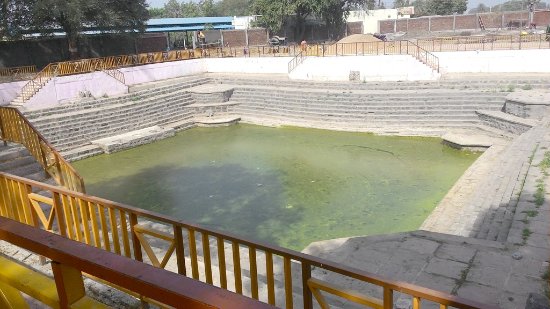
Gomti Kund has a quiet environment on the outskirts of Ujjain city, and is therefore a suitable place to spend a few peaceful moments. It is a tank of holy water or a steep pond near the famous Ashram of Sandipani. According to the legend, at this tank, Lord Krishna consolidated waters from all the sacred rivers to assist his guru, Guru Sandipani, to perform his rituals.
This kund retains among Hindus a religious significance, which is evident from the fact that every year thousands of devotees flock to witness the divinity of this holy site. It is believed that the water of this pond is holy and so, devotees fill their water bottles here and take home the water. On your visit to the Sandipani Ashram, you have to visit this place.

